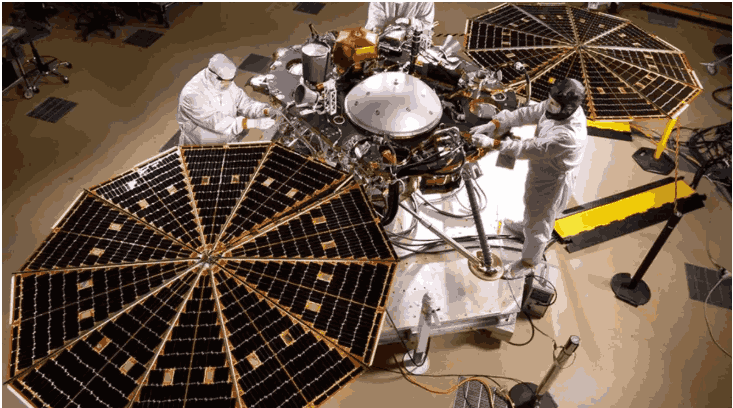A new image captured by the HiRISE camera aboard NASA’s Mars Reconnaissance Orbiter (MRO) reveals the final location of the lander, providing a poignant snapshot of the end of its mission. The image not only marks the end of InSight’s active science operations but also highlights the gradual impact of the Martian environment on the spacecraft. InSight, which landed on Mars on November 26, 2018, was designed to investigate the planet’s interior. Its primary goals included measuring Mars’ seismic activity, mapping its heat flow, and studying its interior structure—information that would provide valuable insights into the formation of rocky planets, including Earth. To accomplish this, InSight deployed a suite of scientific instruments, including a seismometer, a heat probe, and a weather station. These tools allowed scientists to gain unprecedented data about Mars, such as the detection of hundreds of seismic events, many of which were likely caused by “marsquakes,” helping to uncover details about the planet’s internal structure. The HiRISE image, taken in late 2023, shows the lander’s final position at the end of its mission. InSight had experienced a gradual buildup of dust on its solar panels over time, which had caused its power supply to dwindle. Despite efforts to clear the dust using the lander’s remaining capabilities, including short bursts of power, the dust accumulation ultimately left the spacecraft unable to recharge its batteries, marking the end of its operational life. The image shows InSight resting on the Martian surface with its solar panels now covered in a layer of red dust, a natural consequence of the planet’s thin atmosphere and frequent dust storms.The dust that has accumulated on the lander’s solar panels highlights one of the challenges of operating on Mars. The planet’s atmosphere is thin, providing little protection from the constant bombardment of fine dust particles. These dust storms, which can occur at regional or even planet-wide scales, often obscure sunlight and further contribute to the accumulation of dust. While the thin atmosphere does not allow for the formation of rain to wash the dust away, occasional winds can help, though not enough to fully prevent the buildup.
Despite this, InSight’s mission was a resounding success. The lander’s scientific instruments operated well beyond their expected lifetimes, and the data gathered from the Martian surface have helped to deepen our understanding of Mars’ geological history. One of the most notable discoveries was the detection of seismic activity that indicated the presence of liquid water beneath Mars’ surface. This breakthrough, along with detailed information on the planet’s internal structure, provides key clues that could one day guide future missions aimed at exploring Mars’ potential habitability.The InSight mission also served as a testament to the resilience of robotic explorers. While its time on the Martian surface was relatively short compared to other spacecraft like NASA’s Opportunity or Curiosity rovers, its steady stream of data over its lifespan was invaluable for scientists studying Mars. InSight’s legacy will live on through the wealth of data it provided, paving the way for future exploration and the possibility of humans one day walking on Mars. NASA officially declared the end of InSight’s mission in late 2023 after repeated attempts to re-establish contact with the spacecraft, all of which had failed. The lander, which was initially designed to last two Earth years, exceeded its mission goals by almost two additional years. While the spacecraft’s operations are no longer active, scientists continue to analyze the data it collected, ensuring that InSight’s contribution to Mars exploration will be felt for years to come. The HiRISE image not only marks the physical end of InSight’s journey but also serves as a reminder of the challenges of space exploration. Even as the lander’s systems fall silent, the knowledge it gathered about the Martian environment, from its seismic activity to its atmospheric conditions, will remain invaluable as humanity continues to explore the Red Planet. With the legacy of InSight and upcoming missions on the horizon, our understanding of Mars—and our place in the solar system—continues to evolve.

